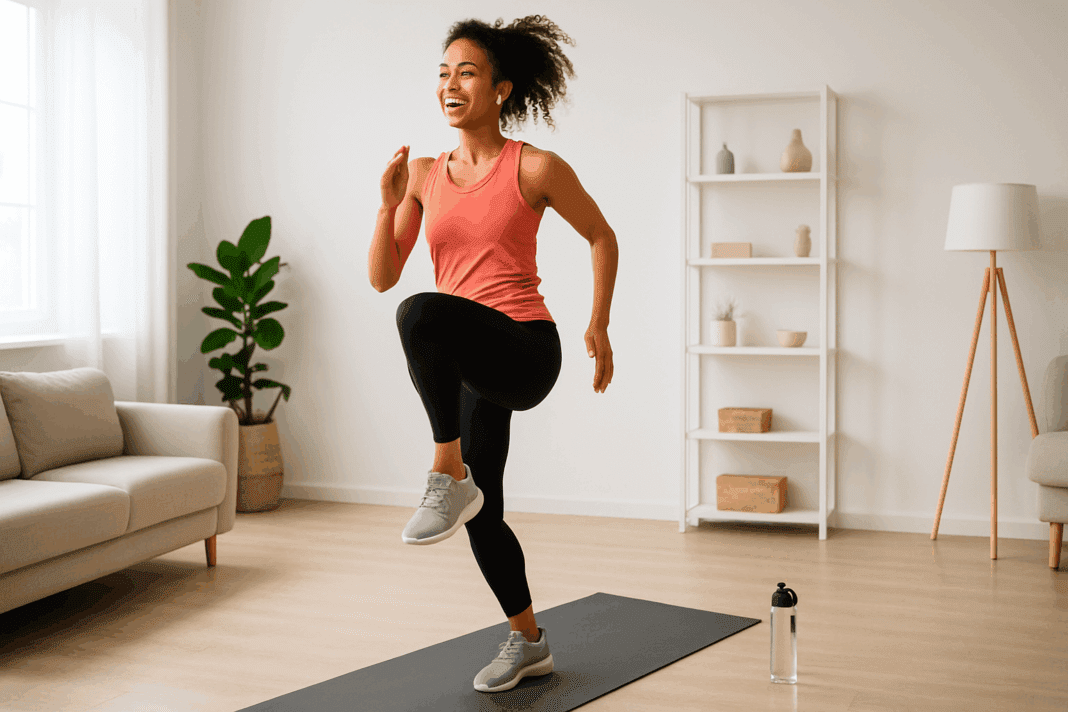Introduction: Why Aerobic Exercise at Home Matters for Sustainable Weight Loss and Endurance
The pursuit of sustainable weight loss and improved physical endurance has led many individuals to seek practical, effective fitness routines that integrate seamlessly into their daily lives. Among the most accessible and scientifically supported strategies is aerobic exercise, a form of cardiovascular training that enhances both fat metabolism and overall stamina. As more people shift toward home-based fitness due to convenience, cost, or personal comfort, the need for accessible and effective aerobic routines has grown exponentially. Understanding how aerobic exercise at home for weight loss can be a powerful tool in transforming both body composition and cardiovascular health is essential, especially for those aiming to achieve lasting results without access to a gym.
You may also like: How to Increase Stamina and Endurance Naturally: Smart Training Tips and Nutrition Habits That Support Cardiovascular Fitness
Aerobic training, by its very definition, involves prolonged physical activity that requires oxygen to generate energy. This sustained, rhythmic movement—whether it’s dancing, brisk walking, jump roping, or cycling—promotes calorie burning, strengthens the heart and lungs, and improves endurance. Home-based aerobic routines offer a flexible, low-barrier entry point for individuals of all fitness levels, allowing them to develop consistency and achieve results with minimal equipment. More importantly, these routines help build the mental and physical resilience needed for long-term health improvements.
This article delves into the science and strategy behind choosing the best aerobic exercise to reduce weight from the comfort of your own home. It explores the physiological mechanisms that make aerobic activity a fat-burning powerhouse, practical techniques to build stamina without leaving the house, and tips to ensure that your efforts lead to lasting change. We’ll also discuss how to avoid common pitfalls and make smart, evidence-backed choices that reflect EEAT principles—Experience, Expertise, Authoritativeness, and Trustworthiness—while ensuring optimal search visibility through effective, natural keyword integration.
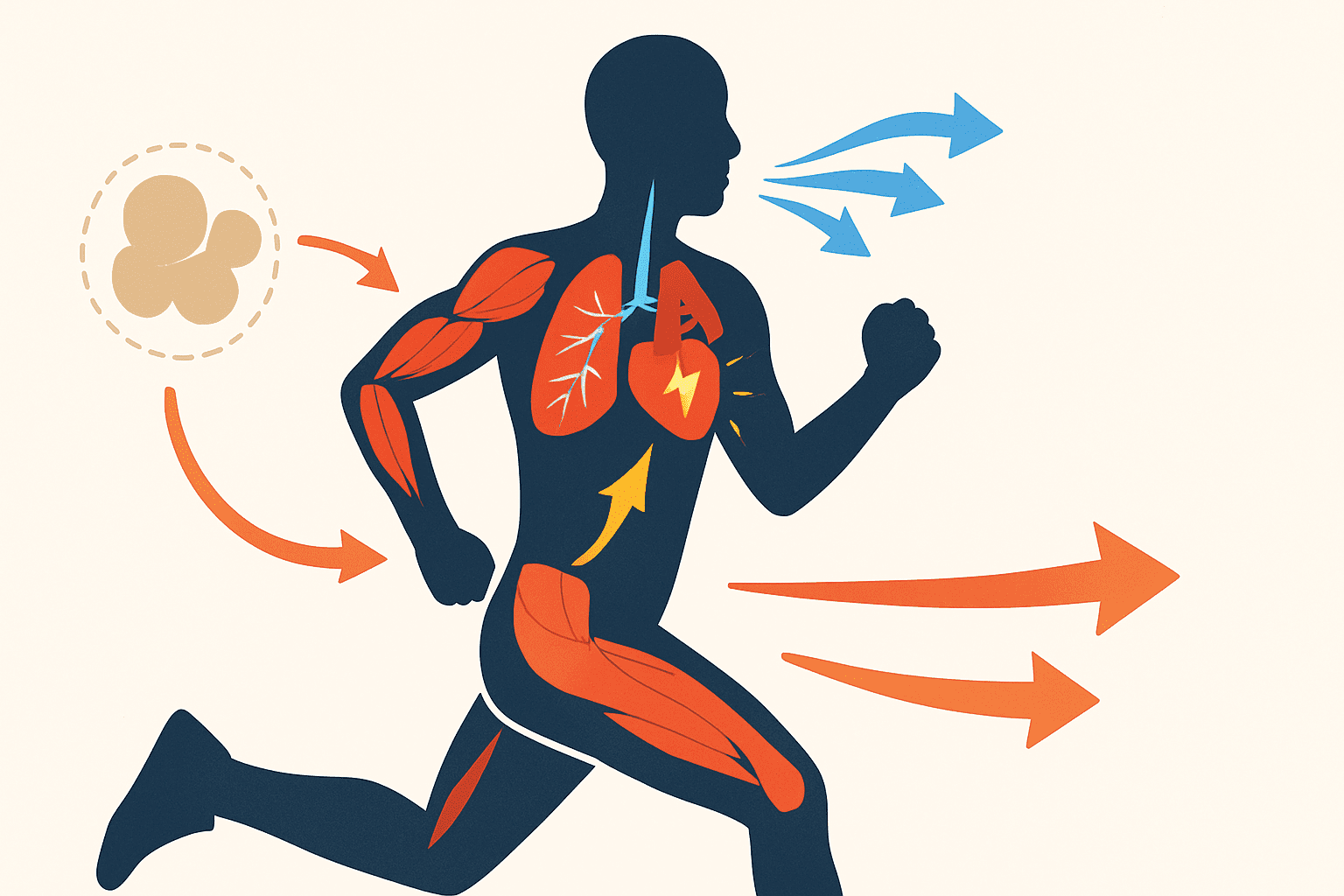
Understanding the Science Behind Aerobic Exercise and Fat Loss
At its core, aerobic exercise engages large muscle groups in rhythmic, continuous movement over extended periods, elevating heart rate and respiratory function to meet increased oxygen demands. This oxygen-centric energy production process allows the body to efficiently burn fat stores, especially when performed at moderate intensity. When aerobic activity is sustained beyond 20 minutes, the body begins to rely more heavily on stored fat as its primary energy source, which is a key reason why aerobic exercise to reduce weight is highly recommended by fitness and health professionals alike.
From a biochemical perspective, aerobic activity increases the rate of lipolysis—the breakdown of triglycerides into glycerol and free fatty acids—making fat available for energy. This mechanism, combined with a calorie deficit achieved through dietary balance, results in weight loss. Furthermore, aerobic exercise improves insulin sensitivity, which can aid in preventing fat storage and promoting a leaner body composition. The longer and more consistently one engages in aerobic training, the more efficient the body becomes at metabolizing fat, reinforcing the long-term benefits of regular cardio.
Unlike high-intensity anaerobic training, which primarily utilizes glycogen stores and produces lactic acid as a byproduct, aerobic workouts are more sustainable and accessible, particularly for individuals with limited fitness experience. This makes them ideal for beginners or those recovering from injury, offering a lower-impact path to better health. Moreover, aerobic routines can be scaled up in intensity as fitness improves, allowing for progressive overload and continued fat-burning gains.

Best Aerobic Exercise Options for Home-Based Weight Loss
Designing a home-based aerobic routine that supports weight loss and endurance training involves selecting exercises that are effective, safe, and easily adaptable. Fortunately, a variety of aerobic options meet these criteria and require little to no equipment. Brisk walking in place, especially when done with high knees or exaggerated arm swings, can significantly elevate heart rate. When paired with short intervals of jogging or marching, it provides a solid cardiovascular workout ideal for beginners.
Jump rope is another powerful aerobic tool. Just ten minutes of continuous jump roping can rival the calorie burn of a 30-minute jog. It improves coordination, cardiovascular health, and muscular endurance. Those without a rope can mimic the motion in place, using the same arm and foot rhythm to achieve similar benefits. Dance workouts—whether freestyle or choreographed routines—blend fun with fitness, making it easier to sustain longer sessions. The joy of movement, set to music, can transform aerobic exercise at home for weight loss from a chore into a lifestyle.
More structured routines, such as step aerobics or HIIT-style circuits with low-impact movements, offer time-efficient ways to burn fat and build stamina. These routines can be adapted using household items like a sturdy step, water bottles for light resistance, or even a yoga mat for added comfort during floor-based exercises. The key is to choose activities that you enjoy and can commit to regularly, ensuring long-term adherence and continuous improvement.
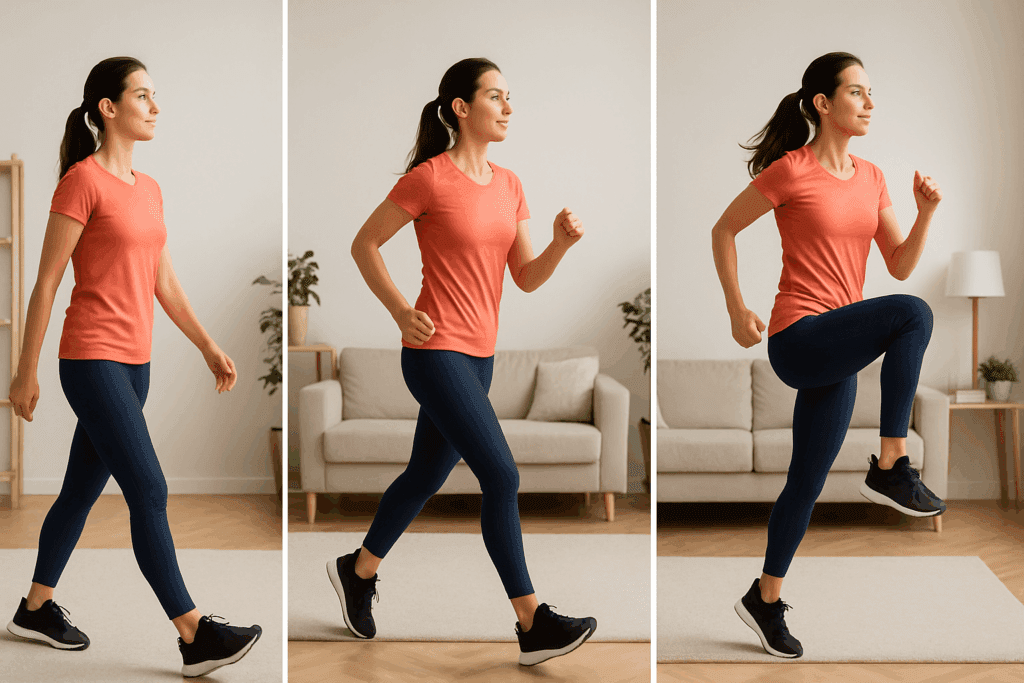
How Aerobic Exercise Builds Endurance Over Time
While weight loss is often the primary motivator for starting an aerobic routine, the endurance benefits of consistent cardiovascular exercise are equally significant. As aerobic capacity increases, the body becomes more efficient at utilizing oxygen, allowing you to sustain physical activity for longer periods with less fatigue. This improvement is directly linked to enhanced mitochondrial function, capillary density, and cardiac output—all hallmarks of endurance training.
Endurance is built gradually, with cumulative sessions strengthening the heart muscle, expanding lung capacity, and increasing muscular stamina. This process not only improves physical performance but also contributes to a greater sense of energy and resilience in everyday life. For individuals who begin with limited stamina, the improvements can be profound. A simple walking routine can evolve into power walking, then light jogging, and eventually more intense routines that deliver even greater cardiovascular benefits.
One of the most remarkable aspects of building endurance through aerobic exercise at home for weight loss is the compounding effect it has over time. With each session, the body adapts, becoming more efficient and better equipped to handle longer durations or greater intensities. This translates into not only improved fat metabolism but also better mental focus, stress reduction, and a sense of achievement that reinforces motivation.
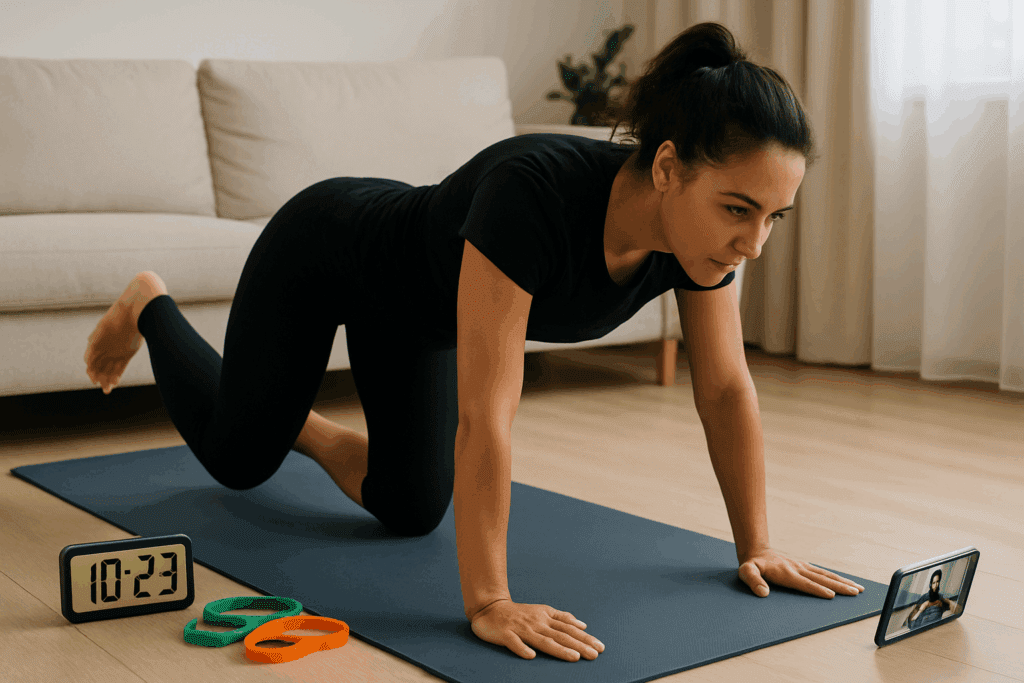
Structuring an Effective Home-Based Aerobic Routine
A well-designed aerobic routine incorporates variety, progression, and adequate recovery to maximize results. Begin with a warm-up that includes light cardio and dynamic stretching to prepare the muscles and cardiovascular system. For beginners, a 20- to 30-minute session performed three to five times per week is a good starting point. As fitness levels increase, gradually extend the duration and incorporate more complex movements to maintain challenge and engagement.
Interval training can be particularly effective when space and time are limited. Alternating between moderate and high-intensity bursts—such as 30 seconds of jumping jacks followed by 30 seconds of marching in place—can elevate calorie burn and improve both aerobic and anaerobic capacity. Incorporating movements that engage the upper and lower body simultaneously will further enhance intensity and promote greater energy expenditure.
To sustain progress, it’s essential to track your workouts, monitor heart rate, and set realistic goals. A fitness tracker or smartphone app can provide insights into calorie burn, time spent in target heart zones, and overall activity levels. This data not only reinforces accountability but also offers motivation as endurance improves and weight begins to shift. Cool-down routines with static stretching and mindful breathing help aid recovery and prevent injury, ensuring that your aerobic exercise routine is both effective and sustainable.
Maximizing Fat Burn with Nutrition and Lifestyle Alignment
Aerobic exercise alone can support weight loss, but its effectiveness is significantly enhanced when paired with proper nutrition and lifestyle habits. Consuming a balanced diet that emphasizes whole, nutrient-dense foods—such as lean proteins, complex carbohydrates, and healthy fats—provides the energy needed to sustain aerobic activity and recover afterward. Timing meals to align with workouts can also boost performance and fat utilization.
For example, eating a light, carb-rich snack 30 to 60 minutes before aerobic training can provide readily available glucose for initial energy demands, allowing fat stores to be tapped into more efficiently as the workout progresses. Post-exercise nutrition should focus on replenishing glycogen and supporting muscle repair, with a combination of protein and carbohydrates being ideal. Hydration is equally critical, as even mild dehydration can impair performance and recovery.
In addition to dietary alignment, lifestyle factors such as sleep, stress management, and daily movement patterns influence how the body responds to aerobic exercise. Poor sleep, chronic stress, and sedentary behavior can all blunt fat-burning efficiency and undermine endurance gains. Establishing a holistic routine that prioritizes recovery, mental well-being, and consistent physical activity outside of formal workouts enhances the long-term effectiveness of aerobic exercise to reduce weight.
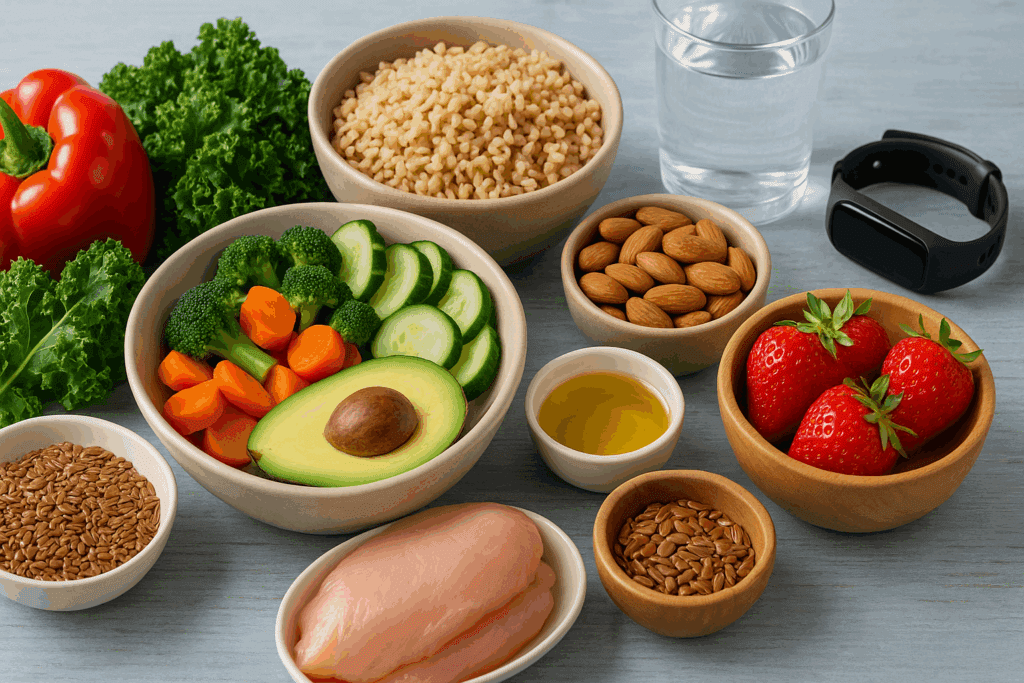
Avoiding Common Mistakes and Staying Motivated at Home
While home-based fitness offers convenience and flexibility, it also presents challenges that can hinder progress if not addressed. One common mistake is a lack of structure or variation, which can lead to plateaus or diminished motivation. To avoid this, regularly update your workout routine with new movements, music, or formats to keep it engaging. Setting specific, attainable goals—such as increasing workout duration by five minutes each week or mastering a new aerobic move—can provide a sense of direction and accomplishment.
Another pitfall is neglecting form and technique, which can result in injury or reduced effectiveness. Unlike a gym environment where professional guidance is available, home workouts require greater self-awareness and discipline. Watching instructional videos from certified trainers, using mirrors to check form, or even recording yourself for review can help maintain proper biomechanics and ensure safety.
Motivation can also wane in the absence of external accountability. Creating a workout schedule, joining virtual fitness communities, or involving family members can help maintain consistency. Remember that results from aerobic exercise at home for weight loss may not be immediate, but perseverance and adaptation are key. Celebrate small milestones along the way, and remind yourself of the broader health benefits that extend far beyond the scale.
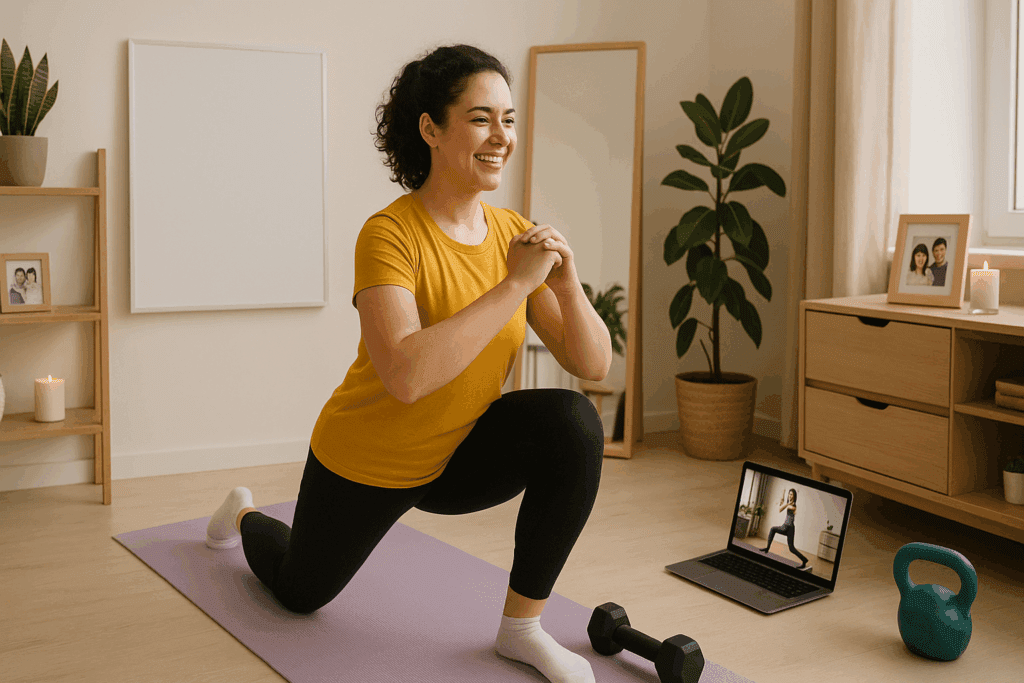
Monitoring Progress and Adjusting for Continued Success
Effective weight loss and endurance building require ongoing evaluation and adjustment. What works well in the initial weeks may need to be modified as your fitness level improves. Regularly assess your progress by tracking changes in weight, body measurements, workout duration, and perceived exertion. Additionally, note improvements in energy, sleep quality, and mood—these are valuable indicators of overall health enhancement.
As your capacity grows, consider increasing the complexity of your aerobic routines. Adding resistance bands, ankle weights, or plyometric elements can challenge the cardiovascular and muscular systems in new ways. Alternatively, extending your workout time or integrating new forms of movement, such as kickboxing or shadow dancing, can renew enthusiasm and prevent stagnation.
Recognizing plateaus and responding appropriately is essential. If weight loss stalls or endurance gains taper off, revisit your nutrition plan, rest periods, and workout intensity. Often, minor tweaks can reignite progress and provide renewed motivation. Embrace the process as a dynamic journey, not a static routine, and be willing to experiment to discover what yields the best results for your unique body and goals.
Frequently Asked Questions: Aerobic Exercise at Home for Weight Loss and Endurance
1. Can I still lose weight with aerobic exercise if I only have 20 minutes a day? Absolutely. While longer sessions may yield higher calorie expenditure, even short, focused workouts can be highly effective when done consistently. A 20-minute aerobic session, especially when performed at a moderate to vigorous pace, can create a meaningful caloric deficit over time. What matters most is maintaining the right intensity and frequency. Many people underestimate the power of consistency, but 20 minutes of aerobic exercise at home for weight loss performed five or six days a week can lead to significant results over a few months. By progressively increasing either intensity or duration, individuals can enhance endurance and continue burning fat efficiently.
2. What are some creative ways to make aerobic exercise at home more enjoyable? One of the most effective ways to make aerobic exercise to reduce weight more enjoyable is to incorporate elements of play and personalization. Dancing to your favorite playlist, turning workouts into a game with fitness apps, or challenging a friend virtually can elevate the fun factor. Switching up routines weekly also keeps things interesting—try kickboxing one week and cardio yoga the next. For many, the monotony of repetition is a barrier to staying active, so infusing variety and personal goals into your sessions can make a huge difference. If your exercise routine reflects your personality, it’s far more likely to become a long-term habit.
3. How does aerobic training influence hormones related to weight loss? Aerobic exercise has a profound effect on hormonal balance, particularly those hormones that regulate appetite, metabolism, and fat storage. It increases the release of endorphins, which not only boost mood but can reduce emotional eating. Regular aerobic exercise to reduce weight also helps lower insulin levels and improve insulin sensitivity, making it easier for your body to access fat stores. Additionally, it can reduce levels of cortisol when performed at moderate intensity—this is important, as elevated cortisol is associated with increased abdominal fat. Hormonal shifts may not always be visible on the scale, but they support deeper metabolic changes that sustain weight loss and increase vitality.
4. Can I combine strength training with aerobic workouts at home for better results? Yes, and doing so can be especially powerful. While aerobic exercise at home for weight loss focuses on fat burning and cardiovascular endurance, strength training contributes to increased muscle mass, which elevates resting metabolic rate. This means you’ll burn more calories even when not exercising. An integrated approach—such as alternating strength days with aerobic days or incorporating resistance into cardio circuits—ensures a more balanced fitness routine. Simple tools like resistance bands or bodyweight moves (e.g., squats, lunges, push-ups) can be seamlessly added to a home workout for compounded benefits.
5. How do I prevent injury while doing aerobic exercise at home for weight loss? Preventing injury begins with preparation and mindfulness. Always include a warm-up and cool-down segment to gradually increase and decrease your heart rate. Choosing proper footwear, even when exercising indoors, can reduce stress on joints. Many people overlook the importance of form and pacing—rushing into high-impact moves without proper alignment can lead to strains or joint discomfort. Consider recording your sessions or using a mirror to check your technique, especially if you’re following online classes. Prioritizing safe movement ensures that aerobic exercise to reduce weight remains sustainable and pain-free.
6. What’s the best way to measure progress when doing home aerobic workouts? Traditional scales can be misleading, as they don’t differentiate between fat loss and muscle gain. Instead, consider tracking inches lost, clothing fit, or improvements in endurance—such as how long you can exercise before tiring. Heart rate monitors and fitness apps can also help track aerobic capacity and calorie expenditure. Journaling how you feel post-workout—energy levels, sleep quality, stress reduction—can reveal less visible but meaningful progress. Aerobic exercise at home for weight loss is about more than numbers; it’s about the full spectrum of wellness changes you experience over time.
7. How does the environment affect the quality of my aerobic exercise at home? Your environment plays a significant role in exercise consistency and motivation. A well-lit, ventilated space free from clutter enhances focus and minimizes distractions. Background music or visuals—such as nature videos or virtual group classes—can increase engagement. Even room temperature matters: cooler environments are ideal for higher-intensity aerobic sessions. If your home lacks dedicated workout space, consider using modular furniture or portable equipment that can be easily stored. Making your space inviting and functional supports both consistency and enjoyment in aerobic exercise to reduce weight.
8. Are there specific types of aerobic exercise best suited for older adults trying to lose weight? Yes, and the key lies in choosing low-impact movements that minimize joint stress while still elevating heart rate. Chair aerobics, water-based movements (for those with access to a pool), and modified dance routines are excellent options. These activities are particularly effective when combined with light resistance or balance training. For older adults, aerobic exercise at home for weight loss can improve not only body composition but also bone density, coordination, and cognitive health. It’s important to consult a healthcare provider before starting any new program, especially if there are underlying health concerns, but most aerobic activities can be safely adapted for older populations.
9. How soon should I expect to see results from aerobic exercise to reduce weight? While results vary depending on diet, intensity, and consistency, many individuals begin noticing changes in energy levels and mood within the first two weeks. Physical changes such as improved endurance, slightly looser clothing, or more defined muscles can appear within four to six weeks. Weight loss may occur more gradually, especially if the body is adjusting to a new routine or building muscle simultaneously. It’s crucial to focus on non-scale victories and long-term gains rather than immediate outcomes. With steady aerobic exercise at home for weight loss, true transformation becomes not just visible—but sustainable.
10. What trends are emerging in home-based aerobic exercise for weight loss? The future of home fitness is being shaped by technology and personalization. Interactive platforms that use AI to adapt routines in real-time, or gamified fitness programs that turn aerobic exercise to reduce weight into engaging challenges, are growing in popularity. Virtual reality workouts, wearable biometric trackers, and smart mirrors with built-in trainers are also redefining the home workout landscape. Additionally, hybrid approaches that blend mindfulness and aerobic movement—like breath-focused cardio yoga or dance meditation—are appealing to individuals seeking both physical and emotional wellness. As demand for flexible, science-backed programs continues to rise, home-based aerobic training is likely to become even more dynamic, inclusive, and results-driven.
Conclusion: The Long-Term Power of Aerobic Exercise at Home for Weight Loss and Endurance
Embarking on a home-based aerobic routine offers more than a means to lose weight—it provides a gateway to lasting endurance, improved metabolic health, and a more empowered relationship with your body. The best aerobic exercise to reduce weight is not a one-size-fits-all solution but rather a personalized approach that aligns with your preferences, lifestyle, and fitness level. When integrated with mindful nutrition and consistent habits, aerobic training becomes a sustainable, rewarding part of everyday life.
Aerobic exercise at home for weight loss is particularly valuable because it fosters independence and resilience. Without relying on gyms, classes, or expensive equipment, individuals can cultivate a sense of ownership over their fitness journey. The flexibility of home workouts also encourages regularity, which is essential for long-term success. By understanding the science, structuring effective routines, and addressing common obstacles, anyone can harness the fat-burning and endurance-boosting power of aerobic training.
Ultimately, the key to success lies in consistency, variety, and self-compassion. Celebrate progress, adapt to challenges, and remember that each session contributes to a stronger, healthier future. Whether your goal is to shed pounds, build stamina, or simply feel more energized, aerobic exercise at home offers a natural, effective path forward. When approached with intention and informed strategy, it becomes not just a workout—but a lifestyle.
Was this article helpful? Don’t let it stop with you. Share it right now with someone who needs to see it—whether it’s a friend, a colleague, or your whole network. And if staying ahead on this topic matters to you, subscribe to this publication for the most up-to-date information. You’ll get the latest insights delivered straight to you—no searching, no missing out.
Further Reading:
What are some of the top cardio workouts?
12 Exercises That Burn the Most Calories
Best Cardio Exercises for Weight Loss: Top 8 Workouts to Burn Fat Fast

